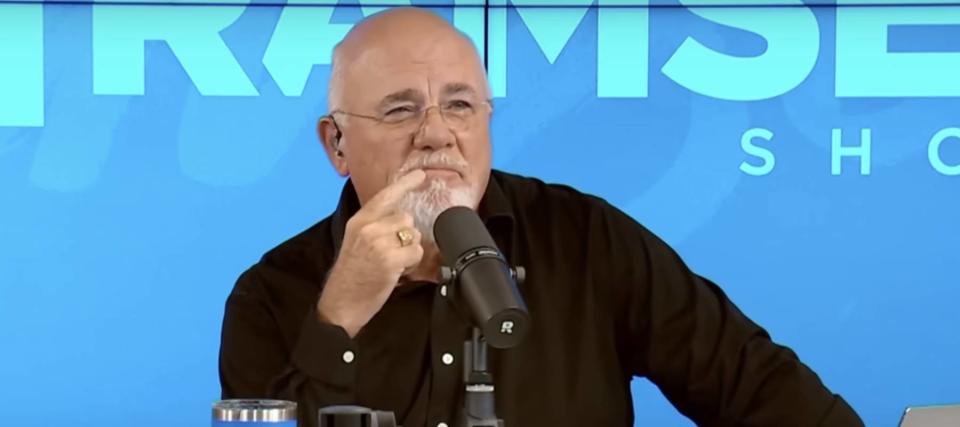‘It’s just sus’: Dave Ramsey responds to the Federal Reserve's decision to cut rates weeks before the election

When the Federal Reserve cut interest rates by 0.5% in September it was the first cut in four years. Dave Ramsey discussed its timing and political implications during a recent episode of “The Ramsey Show.” The personal finance expert speculated about why the central bank loosened monetary policy less than 50 days before the election.
Don't miss
Car insurance premiums in America are through the roof — and only getting worse. But 5 minutes could have you paying as little as $29/month
Commercial real estate has beaten the stock market for 25 years — but only the super rich could buy in. Here's how even ordinary investors can become the landlord of Walmart, Whole Foods or Kroger
These 5 magic money moves will boost you up America's net worth ladder in 2024 — and you can complete each step within minutes. Here's how
“That wasn’t possible four months ago or eight months ago, but right before the election it’s possible,” he said. “It’s just sus. I’m using a good millennial word here: sus.” For those who don’t know, “sus” is a popular slang term meaning suspicious or suspect.
Ramsey said the rate cut won’t impact the economy before the election, but would serve as “good PR” for the Kamala Harris campaign. “One of the things that the current administration is getting hammered on is the state of the economy,” he said.
Although the Federal Reserve is considered an independent government agency, there are those like Ramsey who believe it can be influenced or pressured by governments.
Powell responded to a question about “political motivations” during a press conference after the rate cut was announced. “This is my fourth presidential election at the Fed, and it’s always the same: We’re always going into this meeting in particular and asking what’s the right thing to do for the people we serve,” he said. “It’s never about anything else. Nothing else is discussed.”
He also pointed out that the Fed’s actions affect the economy “for the most part with a lag.”
Historic period for the Fed
The Federal Reserve has a dual mandate to achieve maximum employment and keep prices stable. In other words, the central bank’s objective is to minimize inflation and maximize employment across the economy.
The Federal Open Market Committee in its statement last month said it has “gained greater confidence that inflation is moving sustainably toward 2%, and judges that the risks to achieving its employment and inflation goals are roughly in balance.”
When inflation flared up in the aftermath of the pandemic, the Fed started raising interest rates. From March 2022 to July 2023, the central bank raised interest rates 11 times to bring it to a range of 5.25% to 5.5% — the fastest pace in 40 years. Not only was this historic rate-hiking cycle conducted during the Biden administration, but it also began just a few months away from the 2022 midterm elections.
Read more: Rich, young Americans are ditching the stormy stock market — here are the alternative assets they're banking on instead
Powell’s mention of a lag during the press conference is based on an economic theory put forth by economist Milton Friedman that says that after changes in monetary policy there’s usually long and variable lags in measures like inflation, employment or output also showing changes.
With this in mind, investors should be looking ahead to next year to understand the impact of the Fed’s rate cut decision.
Long-term impacts
Economists expect several more rate cuts ahead. For instance, Morgan Stanley’s Global Investment Committee believes the benchmark rate will fall to 3.5% by the end of 2025.
For consumers, this could be good news. Lower rates could make it cheaper to apply for a new mortgage or car loan or refinance an existing line of credit next year.
Rate cuts could also be a boon to investors. “Since 1980, five of the 10 best years for the S&P 500 happened when the Fed was cutting rates without a recession (1985, 1989, 1995, 1998, 2019),” according to JPMorgan. “The Fed has cut rates 12 times when the S&P 500 was within 1% of its all-time high. The market was higher one year later all 12 times (with a median return of 15%).”
Of course, rate cuts have the opposite effect on fixed income products such as high-yield savings accounts and certificates of deposits. Savers and investors should plan for this shift accordingly.
What to read next
Cost-of-living in America is still out of control — use these 3 'real assets' to protect your wealth today, no matter what the US Fed does or says
Lock in juicy quarterly income through this $1B private real estate fund — even if you’re not a millionaire. Here’s how to get started with as little as $10
Jeff Bezos and Oprah Winfrey invest in this asset to keep their wealth safe — you may want to do the same in 2024
This article provides information only and should not be construed as advice. It is provided without warranty of any kind.